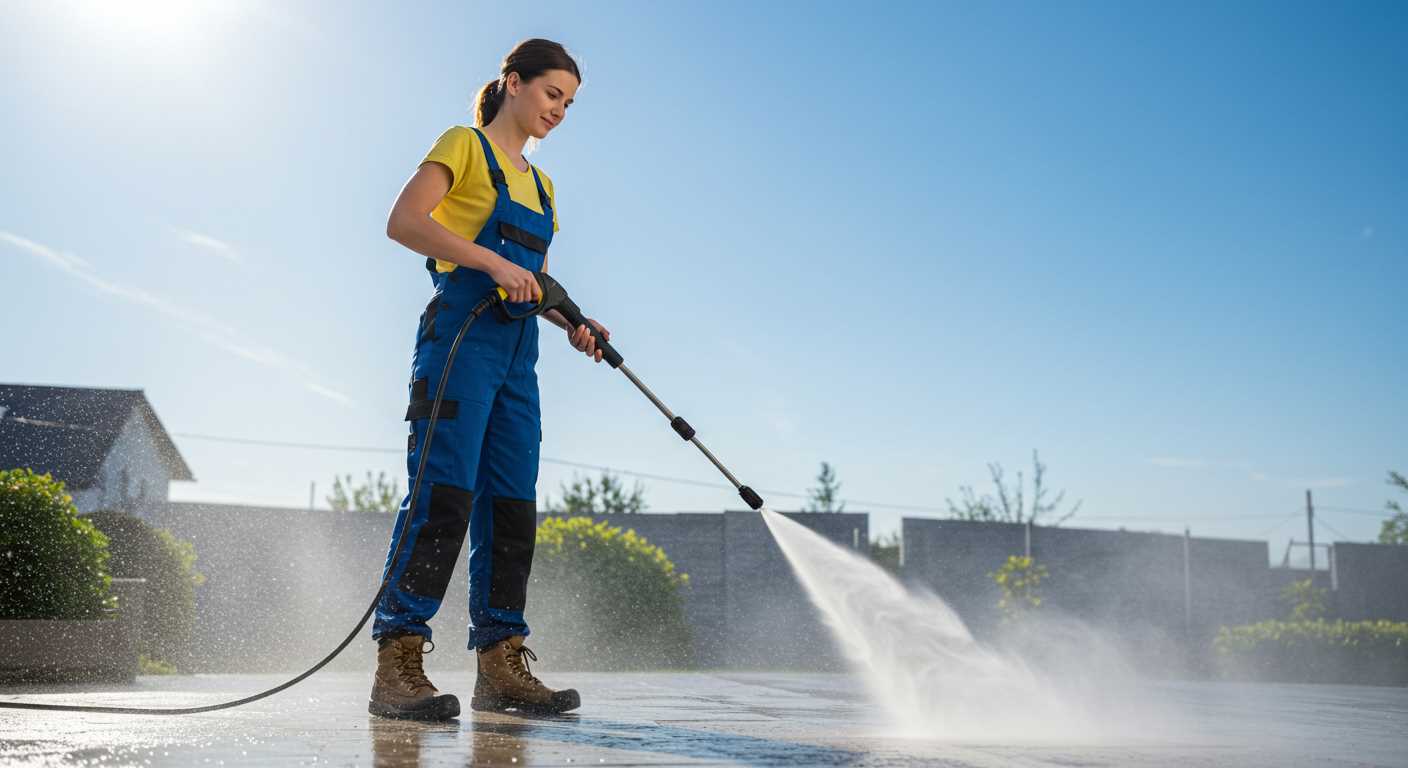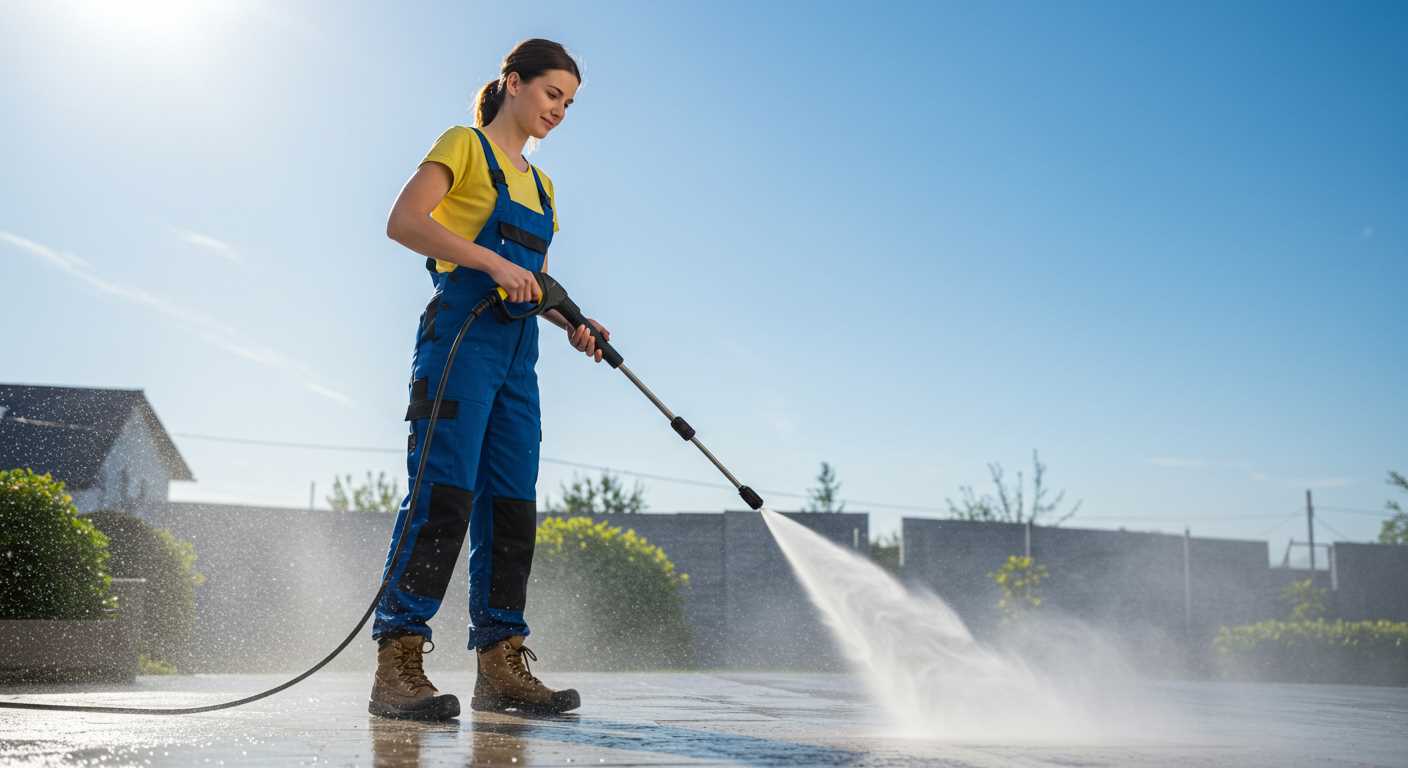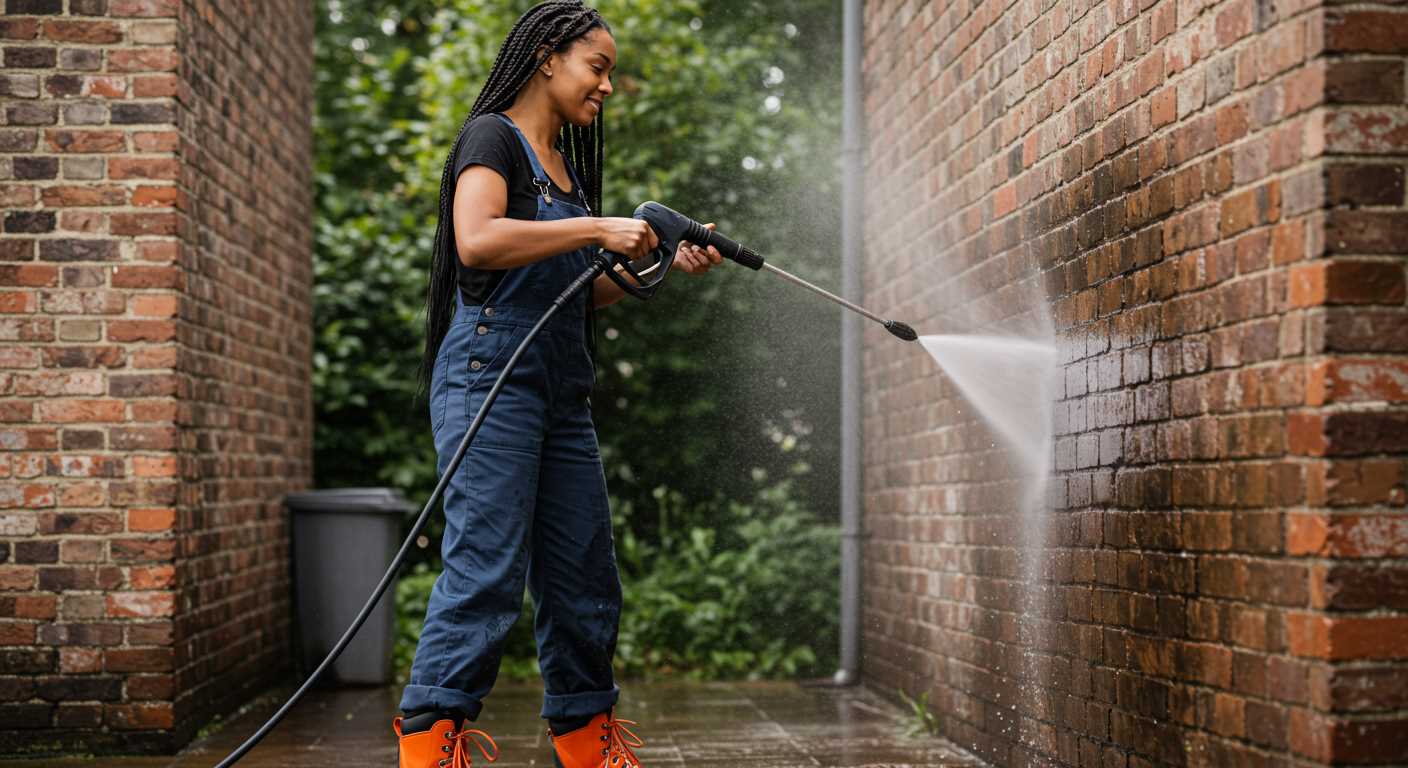




Start with a bucket of warm water mixed with a quality car shampoo. The warmth helps to dissolve grime more effectively than cold water. Use a soft sponge or wash mitt to gently scrub the surface, always rinsing the mitt frequently to avoid scratching the paint. This simple technique mimics the thoroughness of a high-pressure system.
Next, tackle the wheels. A dedicated wheel cleaner can break down brake dust, making it easier to remove with a dedicated brush. Apply the cleaner and let it sit for a few minutes before scrubbing. Rinse thoroughly with a hose or a bucket of fresh water to prevent any residue from drying on the surface.
For the interior, vacuum first and then wipe surfaces with a microfiber cloth and a suitable cleaner. Pay special attention to the dashboard and door panels, where dust tends to accumulate. Using a detailing brush can help reach tight spots and ensure a thorough clean.
Finally, consider applying a coat of wax or sealant once the exterior is dry. This not only enhances shine but also provides a layer of protection against dirt and environmental contaminants. Regular maintenance like this can keep your vehicle looking fresh and prolong its lifespan.
Effective Techniques for Vehicle Maintenance
Start with a bucket of warm water mixed with a high-quality automotive shampoo. A sponge or a soft cloth works best for this task. Dip the sponge in the solution and gently wipe down the surface, beginning from the roof and working your way down. This method prevents dirt from being dragged across the paintwork, reducing the risk of scratches.
Interior Care
For the inside, a vacuum cleaner is indispensable. Use a handheld attachment to reach tight spots. Pay special attention to under the seats and in-between the cushions. After vacuuming, use a microfiber cloth slightly dampened with an all-purpose cleaner to wipe down surfaces, including the dashboard and door panels.
- Use a soft brush to clean vents and tighter spaces.
- For upholstery, consider a fabric cleaner specifically designed to tackle stains.
- Leather seats benefit greatly from a conditioner to maintain suppleness.
Final Touches
After the exterior wash, drying is crucial. Opt for a chamois or a soft drying towel. This step helps prevent water spots. Once dried, apply a wax or sealant for added protection and shine. A quick detailing spray can also enhance the finish.
For wheel care, a dedicated wheel cleaner and a brush will make a significant difference. Rinse well and dry for a polished look. Lastly, don’t forget the windows; a glass cleaner and a microfiber cloth will leave them streak-free.
Selecting the Right Cleaning Products for Your Vehicle
Choosing the correct substances can significantly influence the outcome of your washing routine. Start with a pH-balanced shampoo specifically formulated for automobiles. These products remove dirt without stripping protective wax layers. Look for ones that contain natural ingredients, as they are less harsh and often more effective on various surfaces.
Types of Detergents
Consider a multi-surface cleaner for interiors, especially if you have fabric upholstery or leather. A gentle, non-abrasive formula will ensure the materials remain intact while providing a thorough cleanse. For stubborn stains, a targeted spot cleaner can be invaluable. I remember tackling a coffee spill on a friend’s seat; a dedicated upholstery stain remover worked wonders.
Wax and Sealants
After washing, applying a protective layer is wise. Look for a quality wax or sealant that enhances shine and guards against contaminants. Products with carnauba wax offer a deep gloss, while synthetic sealants provide long-lasting protection. In my experience, a good wax not only looks great but also makes future maintenance easier.
Always test new products on a small area first. This simple step can save you from potential damage or unsatisfactory results. As I learned from years in the field, the right choices can make all the difference. Your vehicle deserves care, and using appropriate substances ensures it stays in top condition.
Preparing Your Vehicle for a Hand Wash
First, gather all necessary materials. You’ll need buckets, sponges or wash mitts, microfiber towels, and a suitable shampoo. Ensure that your wash mitts are clean and free from debris to avoid scratching the surface.
Next, park the vehicle in a shaded area. Direct sunlight can cause soap to dry too quickly, leaving streaks or spots. It’s best to work on a cool surface, which also helps maintain the temperature of the water and cleaning solution.
Before you start, remove any loose items from the interior and trunk. This includes personal belongings and trash. An uncluttered space allows for easier access and prevents dirt transfer during washing.
Inspect the exterior for any sticky residues or grime. Pay attention to areas like the wheels and lower panels where dirt tends to accumulate. A quick rinse with plain water can help loosen stubborn grime before applying soap.
Ensure all windows are closed tightly to avoid any soap or water entering the interior. You might also want to tape over any areas with exposed electronics or sensitive components to prevent damage.
Finally, check the weather forecast. A sudden rain shower can spoil your efforts. Aim for a day with mild temperatures and low humidity for the best results.
Step-by-Step Guide to Hand Washing Your Vehicle
Begin with gathering your materials. You’ll need a bucket, sponge, soft cloths, wheel brush, and a drying towel. Choose a pH-balanced soap suitable for automotive surfaces. Ensure your sponge is clean to avoid scratches.
- Rinse Thoroughly: Use a hose to rinse off loose dirt and debris. Start from the top and work your way down, allowing dirt to flow downwards.
- Prepare Your Soap Solution: Fill a bucket with water and add the recommended amount of soap. Mix until it’s bubbly.
- Wash in Sections: Dip your sponge into the soapy water and start washing one section at a time. Use straight strokes to minimise swirl marks.
- Focus on the Wheels: Use a dedicated wheel brush with a separate cleaning solution to scrub the wheels. Pay attention to the brake dust and grime.
- Rinse Again: After washing a section, rinse it immediately to prevent soap from drying on the surface.
- Dry the Surface: Use a soft, absorbent towel to dry each section. This helps avoid water spots.
- Final Touches: Inspect for missed spots and give them a quick wash. For extra shine, consider applying wax after drying.
For those who value efficiency, consider tools like the best cordless garden vacuum shredder to manage debris around your home and keep your workspace tidy.
Techniques for Cleaning Windows and Mirrors
For a sparkling finish on windows and mirrors, start with a high-quality microfiber cloth. This fabric reduces streaks and lint, making it ideal for achieving a crystal-clear result.
Mix a solution of equal parts distilled water and vinegar. This combination effectively cuts through grime and leaves surfaces streak-free. For tougher spots, a few drops of dish soap can enhance the mixture’s cleaning power.
Use a spray bottle to apply the solution evenly, then wipe with the microfiber cloth in a circular motion. Follow up with vertical strokes to ensure any remaining residue is picked up. For mirrors, finish with a horizontal wipe to eliminate streaks.
For those tricky spots, such as corners and edges, a soft-bristled toothbrush can reach areas that cloths might miss. Just dampen the brush with the cleaning solution and gently scrub.
Here’s a quick reference table for your window and mirror cleaning toolkit:
| Item | Purpose |
|---|---|
| Microfiber Cloth | Minimises streaks and lint |
| Distilled Water | Prevents mineral deposits |
| Vinegar | Breaks down grime |
| Dish Soap | Boosts cleaning power |
| Spray Bottle | Even application |
| Soft-Bristled Toothbrush | Reaches tight spots |
For those considering a more robust method, you might explore options like a karcher pressure washer for decking for maintaining outdoor surfaces, but for indoor and personal vehicle glass, these techniques suffice.
Interior Cleaning: Tips for a Spotless Cabin
Start with a thorough declutter. Remove any trash, personal items, and loose change from all compartments. This simple step makes the rest of the process much smoother.
Upholstery and Surfaces
For fabric seats, a vacuum with a brush attachment works wonders. Focus on seams and crevices where dirt accumulates. If stains are present, create a solution using warm water and a mild detergent. Test it on a hidden area first to ensure it doesn’t discolour the fabric. Apply the mixture with a soft cloth, gently blotting the stain rather than rubbing it.
For leather interiors, use a dedicated leather cleaner or a mix of equal parts vinegar and water. Apply it with a soft cloth, avoiding over-saturation. After cleaning, condition the leather with a quality product to maintain its suppleness.
Dashboard and Controls
Use a microfiber cloth to wipe down the dashboard and control areas. A mixture of water and isopropyl alcohol or a dedicated interior cleaner can help remove grime. Pay attention to the buttons and knobs, as they often collect oils from hands. For the air vents, a soft brush or a cotton swab can effectively dislodge dust.
Finish by using a glass cleaner on any screens or displays, ensuring a streak-free shine that enhances visibility.
Dealing with Stubborn Stains and Odours
For those persistent marks, a mixture of baking soda and water can work wonders. Create a paste, apply it generously to the stained area, let it sit for approximately 15 minutes, then wipe it away with a damp cloth. This method is particularly effective on fabric upholstery and carpets.
Removing Grease and Oil
When faced with greasy residues, choose a degreaser specifically formulated for automotive use. Spray it directly onto the affected area, allow it to penetrate for a few minutes, and then scrub with a soft-bristled brush. Rinse with a damp cloth to remove any leftover product.
Combatting Unpleasant Smells
For odours, white vinegar is a reliable ally. Mix equal parts vinegar and water in a spray bottle, and lightly mist the interior surfaces, avoiding excessive saturation. The vinegar will neutralise the smells without leaving a lingering scent. After application, leave the doors open to allow for air circulation.
In case of musty fragrances from the upholstery, sprinkle baking soda on the affected area and leave it overnight. Vacuum the residue the next day for a fresher cabin atmosphere.
For a thorough approach, incorporate a specialised odour eliminator designed for automotive interiors. Follow the manufacturer’s instructions for optimal results. These products often target specific sources of smells, ensuring a pleasant environment.
Finishing Touches: Waxing and Polishing Your Vehicle
To achieve a showroom shine, invest time in applying wax and polish after the washing process. Start with a quality car wax, ideally a natural product like carnauba, which provides a deep, rich shine and excellent protection against environmental elements.
Use a foam applicator pad to apply a thin, even layer of wax. Work in small sections to ensure even coverage. Allow the wax to haze over, which usually takes about 5-10 minutes, depending on the product. This step is crucial as it allows the wax to bond effectively with the surface.
Once the wax has hazed, take a clean, soft microfiber cloth and buff the surface. Use circular motions and apply light pressure to avoid marring the finish. Keep flipping the cloth to a clean side to prevent scratches. This buffing process enhances the shine and removes any excess product.
Polishing comes next if your paint has light imperfections or swirl marks. Choose a polish that suits your vehicle’s finish. Apply a small amount to a clean applicator pad and work it into the paint using a dual-action polisher or by hand, depending on your comfort level. This step helps restore clarity and depth to the colour.
After polishing, it’s advisable to apply a sealant for added protection, especially if your vehicle is regularly exposed to harsh conditions. Sealants create a barrier that lasts longer than wax and enhances the shine.
Finally, step back and admire your handiwork. Regular waxing and polishing not only improve the aesthetic but also prolong the lifespan of the paintwork, keeping your vehicle looking its best for years to come.
FAQ:
What are some effective methods to clean a car without a pressure washer?
There are several methods to clean your car without the use of a pressure washer. One option is to use a bucket of soapy water and a sponge or wash mitt. Start by rinsing the car with a hose to remove loose dirt, then apply the soapy water in sections, scrubbing gently to avoid scratches. Another method involves using a foam sprayer attached to a hose, which can create foam for easier cleaning. For wheels and tyres, a dedicated wheel cleaner and brush will help to remove brake dust and grime effectively. Additionally, using a microfiber cloth for drying can prevent water spots.
Can I use household cleaners to wash my car?
While some household cleaners may seem convenient, they are not recommended for car cleaning. Many household products contain harsh chemicals that can damage the car’s paintwork or leave residues. Instead, it is advisable to use products specifically designed for automotive cleaning. These products are formulated to clean effectively without harming the vehicle’s surfaces. If you’re in a pinch, a mixture of car shampoo with water is a safer alternative to conventional household cleaners.
How do I clean my car’s interior without a vacuum cleaner?
If you don’t have a vacuum cleaner to clean your car’s interior, you can still achieve good results. Start by removing all loose items from the seats and floor. Use a brush or lint roller to pick up dirt and debris from the upholstery. For hard-to-reach areas, a soft brush or a cloth can help dislodge dust. You can also use a damp cloth to wipe down surfaces. For the floor mats, you can shake them out or beat them to release dirt before giving them a good scrub with soapy water.
Is it safe to wash my car in direct sunlight?
Washing your car in direct sunlight is not ideal, as it can cause soap and water to dry too quickly, leading to streaks and spots on the paint. If you must wash your car outdoors, try to do it in the early morning or late afternoon when the sun is less intense. Alternatively, find a shaded area to wash your car. If this is not possible, you might want to rinse the sections you are cleaning frequently to prevent the soap from drying out too fast.
What tools do I need to clean my car thoroughly without a pressure washer?
To clean your car thoroughly without a pressure washer, you will need a few basic tools. Start with a bucket, a sponge or wash mitt, and a car-specific shampoo. A hose with a spray nozzle is also useful for rinsing. For drying, a microfiber towel is recommended to absorb water without causing scratches. Additionally, a wheel brush and dedicated wheel cleaner will help you clean the wheels effectively. Having glass cleaner and a cloth for the windows will ensure a complete clean. If you have a detailing brush, it can be useful for cleaning tight spaces.
What are the best methods for cleaning a car without a pressure washer?
Cleaning a car without a pressure washer can be done effectively using a few simple methods. One popular approach is to use a bucket of soapy water and a sponge or wash mitt. Start by rinsing the car with a hose, if available, to remove loose dirt. Then, mix car wash soap with water in the bucket and use the sponge to wash the car in sections, starting from the top and working your way down. After washing, rinse each section with water to prevent soap residue. For stubborn stains, a clay bar can be used to gently remove contaminants from the paint surface. Finally, drying the car with a microfiber towel helps prevent water spots. Alternatively, you can use a foam cannon attached to a garden hose to create foam without a pressure washer, making the cleaning process more efficient.







.jpg)


